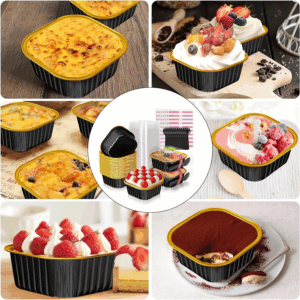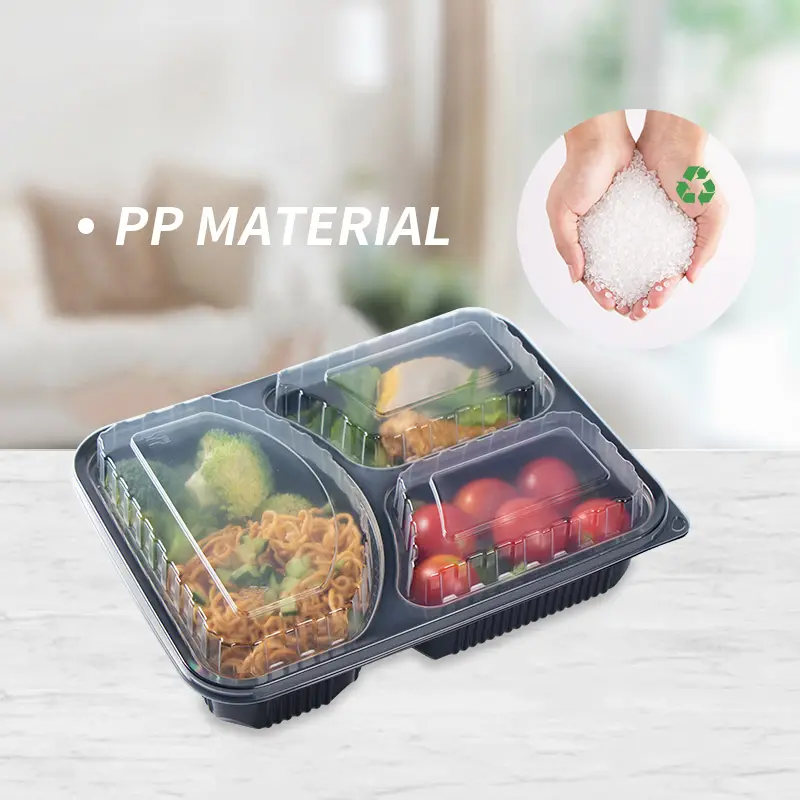Choosing the right aluminium foil container for your business involves several considerations to ensure you meet both practical and environmental goals. Here’s a step-by-step guide to help you make the best choice for your business:
1. Consider the Type of Food You Serve
Different foods require different types of packaging, so it’s essential to match the container with the type of food you offer:
- Hot Foods: If you’re serving hot meals like curries, pasta, or grilled items, choose containers that retain heat well and can withstand high temperatures without warping or leaking.
- Cold Foods: For cold items like salads, desserts, or deli meats, go for containers with a snug lid that prevents air and moisture from affecting food quality.
- Liquid or Saucy Foods: For soups, stews, or saucy dishes, opt for deeper containers with tight-fitting lids to avoid spills.
2. Size and Portion Control
Choosing the right size is crucial to minimizing food waste and ensuring your customers get the right amount of food:
- Individual Portions: Single-serving containers are ideal for fast food, snacks, or small meals.
- Family or Group Portions: Larger containers are suitable for family meals, catering, or party orders.
- Customizable Sizes: Some suppliers offer customizable sizes, allowing you to match your food offerings more precisely to your packaging needs.
3. Lid Compatibility and Sealability
The lid is just as important as the container itself:
- Tight-Fitting Lids: Ensure the container has a secure, tight-fitting lid to prevent leaks, spills, and contamination.
- Clear Lids: If you want customers to see the food inside, opt for clear lids. These give the packaging a high-end feel while allowing customers to see their meals.
- Locking Lids: Some containers feature locking mechanisms or tabs to securely seal the container, offering extra assurance during transport.
4. Eco-Friendly Options
If sustainability is a priority for your business, look for eco-friendly aluminium options:
- Recyclable: Ensure the containers are made from recyclable aluminium. Many manufacturers offer fully recyclable containers that can be recycled without losing quality.
- No Coatings: Avoid containers with non-recyclable coatings, as these can complicate the recycling process. Opt for simple, uncoated aluminium containers.
5. Temperature Resistance
Aluminium is great for both hot and cold applications, but make sure the containers can handle extreme temperatures if your food requires it:
- Oven-Safe Containers: If your food needs reheating, choose oven-safe containers. Some aluminium containers can be used in the oven, while others are designed only for short-term heat retention.
- Freezer-Safe Containers: If you plan on offering frozen takeout or meal prep options, look for containers that can withstand freezing temperatures without cracking or losing integrity.
6. Durability and Strength
Look for containers that are durable enough to handle delivery and transport without crushing or bending:
- Gauge: The thickness of the aluminium affects its strength. Containers made from thicker gauges are stronger and more durable, ideal for heavier or saucier dishes.
- Reinforced Edges: Containers with reinforced edges or rims are less likely to get deformed during transport.
7. Cost and Quantity
Pricing can vary based on size, quality, and customization, so balance cost and quality:
- Bulk Orders: If you order in bulk, you may get a better price per unit, which is ideal for businesses that require large quantities of packaging regularly.
- Cost-Effective Choices: Look for a supplier that offers a good balance between cost and quality. Sometimes slightly higher upfront costs for stronger, more durable containers can save money in the long run by reducing food waste or damaged packaging.
8. Branding and Customization
Your packaging is a chance to make a great first impression:
- Printed Containers: Many suppliers offer custom printing on aluminium foil containers. This is an excellent opportunity to add your logo, brand colors, or a unique message, which can make your packaging stand out and reinforce your brand identity.
- Design Features: Look for containers with unique design features like tabs, handles, or specific shapes that might fit your food offerings better.
9. Compliance with Health and Safety Regulations
Ensure that your containers meet local health and safety regulations for food storage, transportation, and recycling. This includes using food-safe materials that don’t leach harmful chemicals into food.
10. Supplier Reputation
Choose a reliable supplier with a reputation for quality and customer service:
- Reviews and Feedback: Check customer reviews and ratings for the supplier. Look for feedback on product quality, delivery times, and customer support.
- Samples: Before placing a large order, request samples to test the containers’ quality and functionality with your food.
By considering these factors, you can ensure that you choose the right aluminium foil containers for your business—whether you’re a small café or a large food delivery service. The right choice will enhance your customer experience, align with sustainability goals, and improve the efficiency of your operations.
















